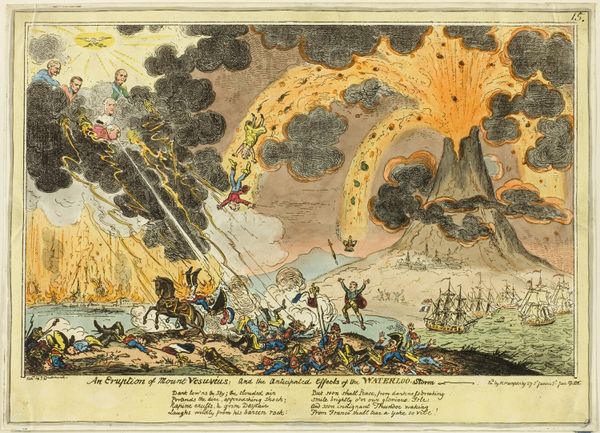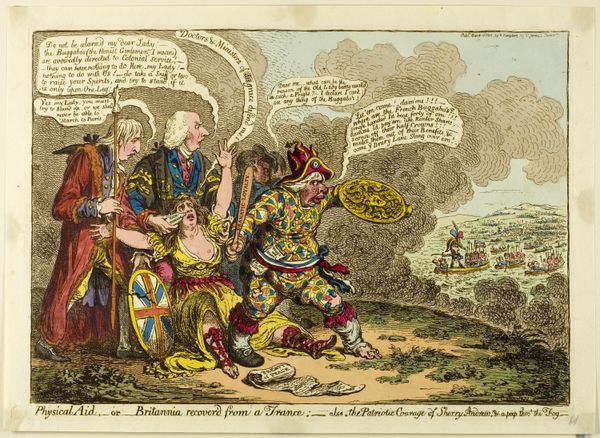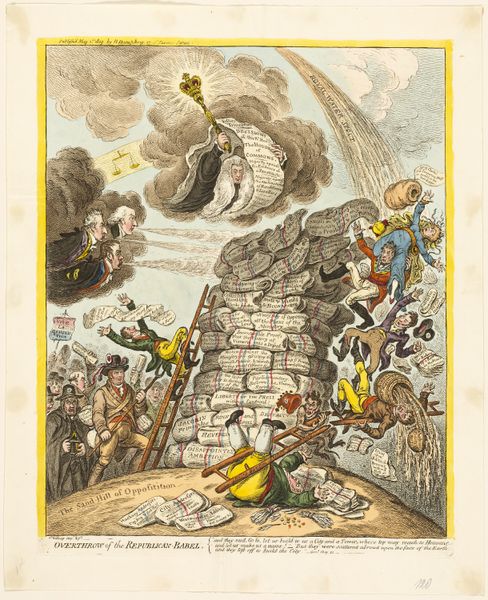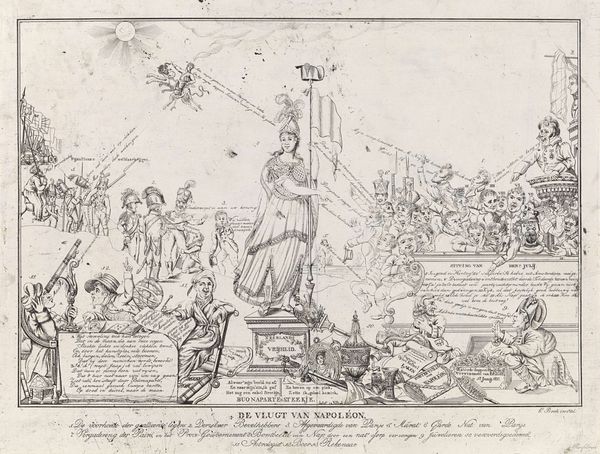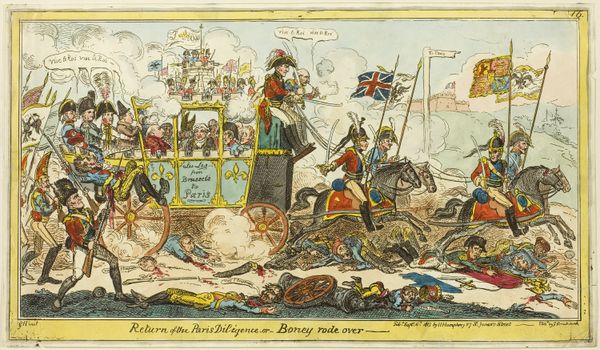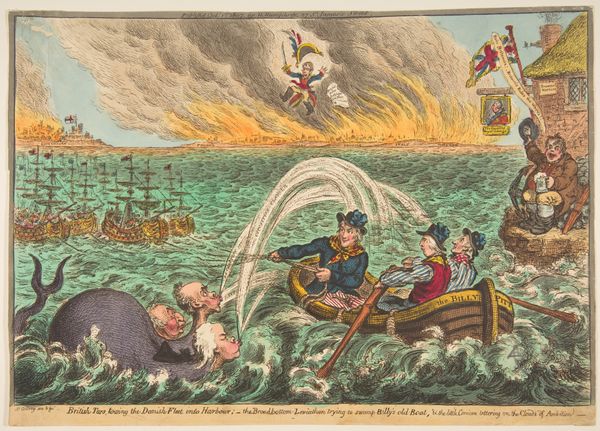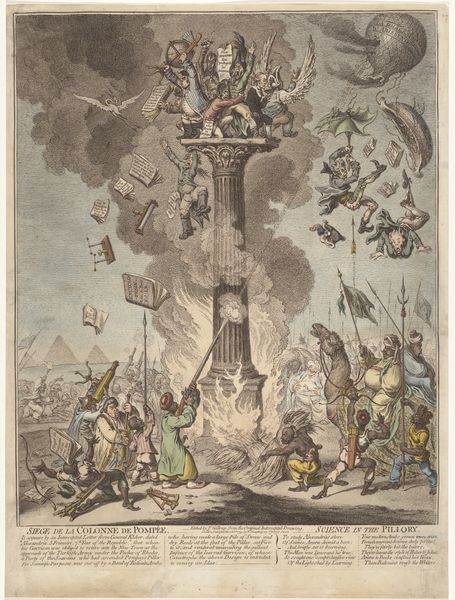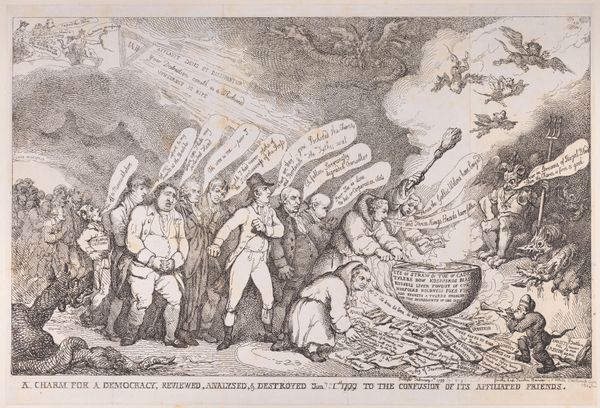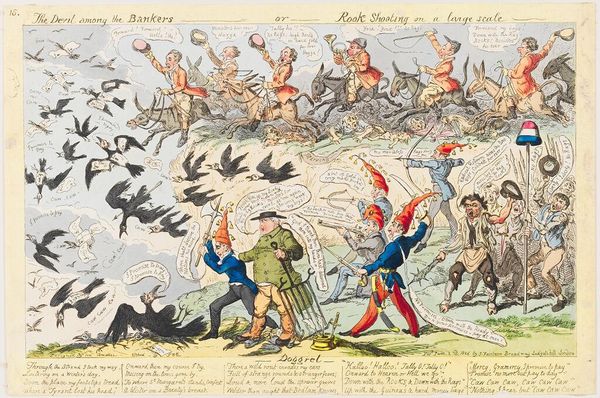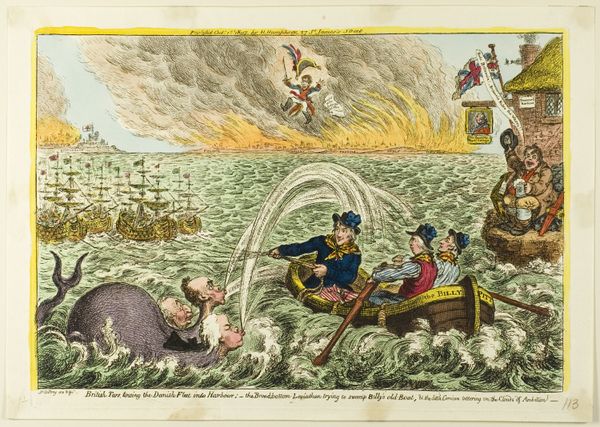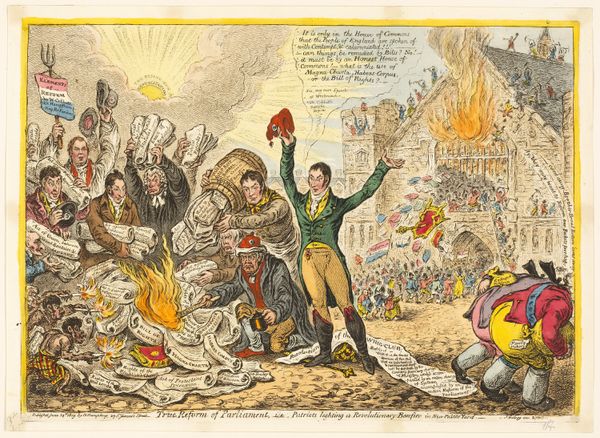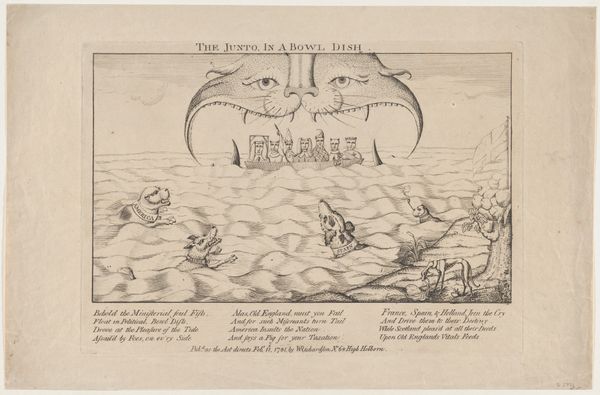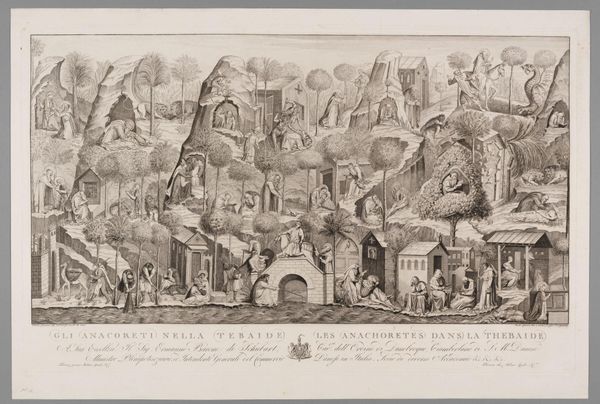
drawing, print, etching, paper
#
drawing
# print
#
etching
#
caricature
#
paper
#
romanticism
#
genre-painting
Dimensions: 241 × 342 mm (image); 247 × 348 mm (plate); 252 × 353 mm (sheet)
Copyright: Public Domain
Curator: Good afternoon. We are looking at "The T Trade in Hot Water," an etching that some attribute to George Cruikshank, possibly around 1818. It resides here at the Art Institute of Chicago. Editor: It's chaos, pure chaos! My immediate impression is of an exploding teapot, brimming with figures and text, a real pandemonium depicted on paper. Curator: Precisely. The composition revolves around the central image of a teapot labeled "Steam Engine," connected by a spout to a giant teacup where frantic figures are being deposited. This links directly to the political and economic turmoil surrounding the tea trade in London. Editor: I see that now. The London Tea House stands behind plumes of smoke while individuals escape from the teacup into the path, strewn with balance sheets. What about the details, I see script covering much of the open space within the exploding teapot. Curator: Those frantic lines within the "steam engine" represent arguments and pamphlets related to the tea trade dispute of that period. Observe how this confluence of social, economic, and artistic elements illustrates Romanticism's inclination toward dynamism and individualism through form. Editor: It is remarkable how the etching captures a particular moment of contention. I wonder how audiences perceived the social commentary when Londoners were navigating the debate over adulterated tea and corrupt traders. Curator: Yes, consider also the interplay of textures. Look at the crisp, precise lines describing the figures, compared with the swirling, almost uncontrolled lines representing smoke. These lines emphasize themes within British culture and how to read these social commentaries that become available through their interplay. Editor: True, this textural interplay serves as more than decorative technique. I find that the juxtaposition heightens the overall sense of societal instability. The romantic flourish with sharp, crisp strokes adds dynamism within its commentary on cultural norms. Curator: I agree entirely, by emphasizing conflict and visual contrast, Cruikshank transforms "The T Trade in Hot Water" into a profound commentary on trade imbalances. Editor: After all is said and done, its enduring power is in revealing cultural unease and anxieties from past eras that reverberate today through visual dynamics.
Comments
No comments
Be the first to comment and join the conversation on the ultimate creative platform.

